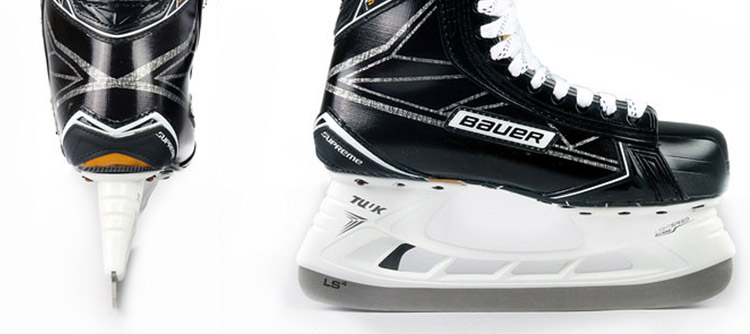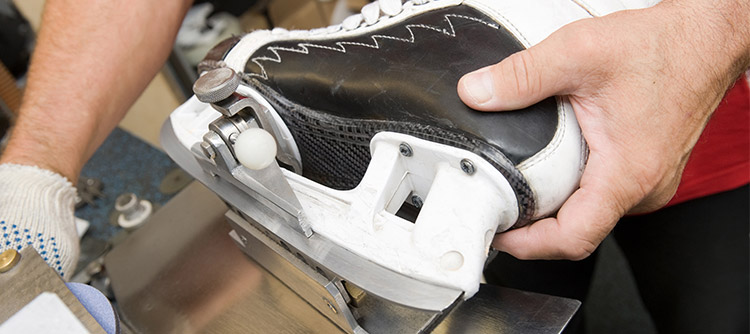Blade Grades: Having A Feel For Hockey Steel
Posted by Adam Rosenbaum on 10 10 2018

In the equipment-centric world that is hockey, perhaps no bit of gear is as important as your skate blades. The wrong hockey skate blades can make you work too hard, tire too easily, move too slowly or wobble too often. The best hockey skates have blades that make you feel kinetic and connected.
Choices are many. Which skate blades are right for you?
Know the Shape You’re In
Skate profiling, or contouring, is altering the shape of the blade lengthwise. This impacts the radius of the blade, which is to say how much of the blade contacts the ice at any given time. The flatter the blade (the less “rock” it has from heel to toe), the more stable the skater.
It’s not the same as skate sharpening. Sharpening deals with the depth of the hollow — the space between the two edges — of your skate blades.
For profiling, think of the blade as a segment of a circle. Radius measurements for hockey blades range from 7 feet to 13 feet, which is to say that if you constructed a circle from 7-foot-radius blades laid end to end, you’d end up with a 7-foot circle.
The larger the radius, the better the straight line, top-end speed and stability. The shorter the radius, the better the maneuverability. The blade can also be contoured with a forward lean or a backward lean — the former enhancing speed, the latter stability.
The Steel Deal
More than two-thirds of NHL players wear Bauer skates. Some of those players may use aftermarket blades (more on those in a bit), but when Bauer introduces a new runner, it’s usually a big deal. The LIGHTSPEED 5 Carbon EDGE, new for 2018, is no exception. Coming on the heels of the LS3 and LS4 blades, the LS5 is billed as having a softer inner of stainless steel designed for enhancing edge sharpness, and a carbon coating that promotes edge retention and bite. Bauer suggests you go to a flatter radius and a shallower hollow when moving up to the LS5, so drastic is the difference in sharpness and bite over older blades. A Bauer/NHL study showed players reduce their hollow when switching to the LS5.
CCM puts carbon-coated Speedblade Black runners on the top models in its Super Tacks and Ribcor lines, and the Speedblade Hyperglide Steel blade, promoting better speed and longer edge life, on its lightweight JetSpeed skate. Both blades have been successful for CCM, which has kept them in the lineup for several years. Both sharpen easily, bite well and stand up to abuse better than most.

True has one skate in the NHL, but it is worn by 11 percent of the league’s players — and its Pro Custom skates come equipped with Step Steel blades. Step has been making after-market blades since 2005, and is known for its high-grade steel and exceptional quality control. The Velocity Steel, polished to a mirror finish, and Black Steel, sandwiched with layers of carbon nanoparticles, are later additions to the line, the former instigating and the latter latching onto the latest industry trends.
Among the other after-market hockey blades are:
The Latest and Greatest?
When the Washington Capitals won the 2018 Stanley Cup, more than half their roster was skating on Bladetech Burner Blades. Founded in 2013, the company came up with what is essentially a spring-loaded blade that compresses in the heel and the start of a stride, and releases that energy through the push-off. Bladetech counts more than 50 players across 12 NHL teams on its endorsement roster.
Have any ideas for the blog? Topics you would like to see covered? Contact us and let us know!
